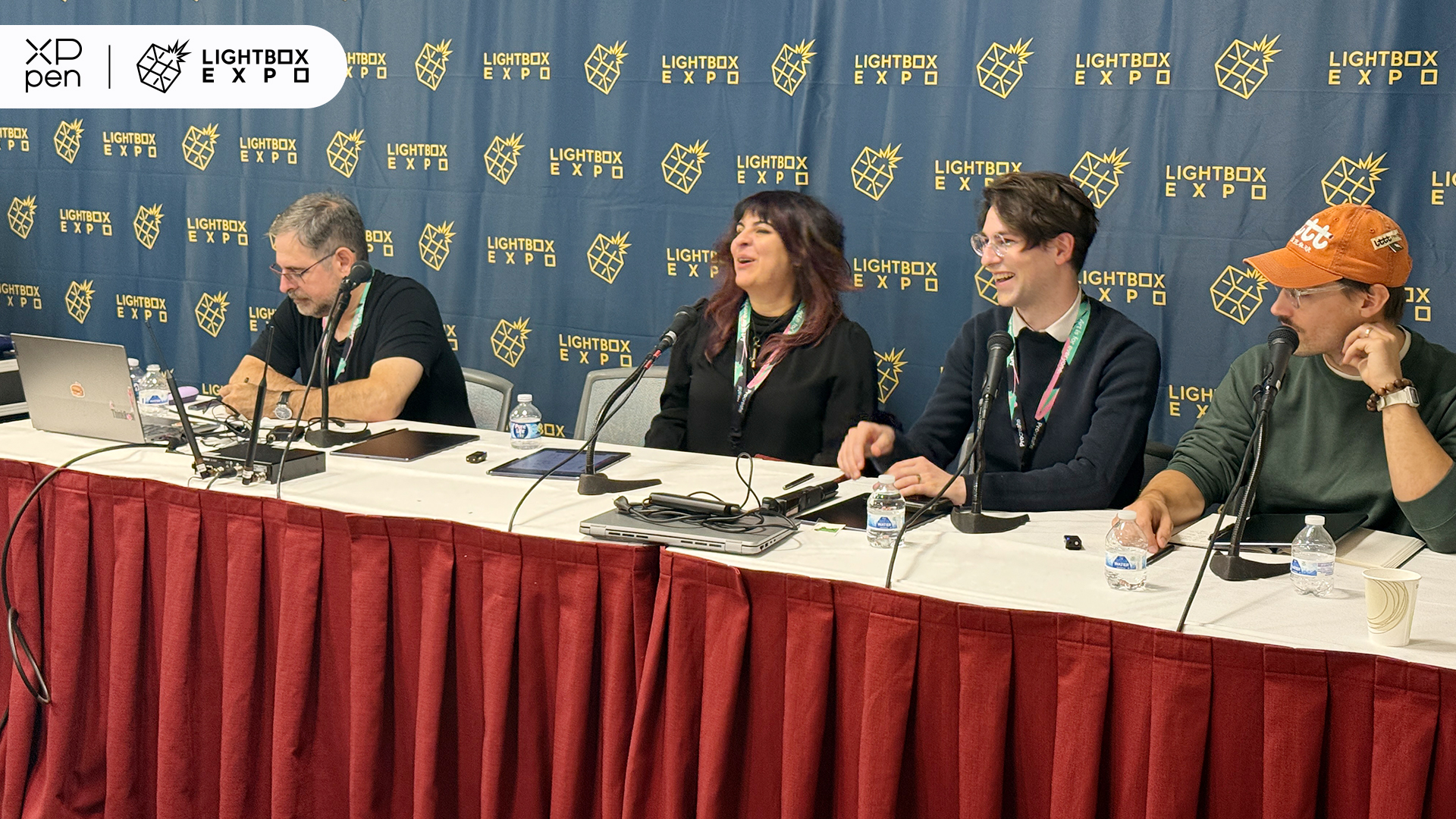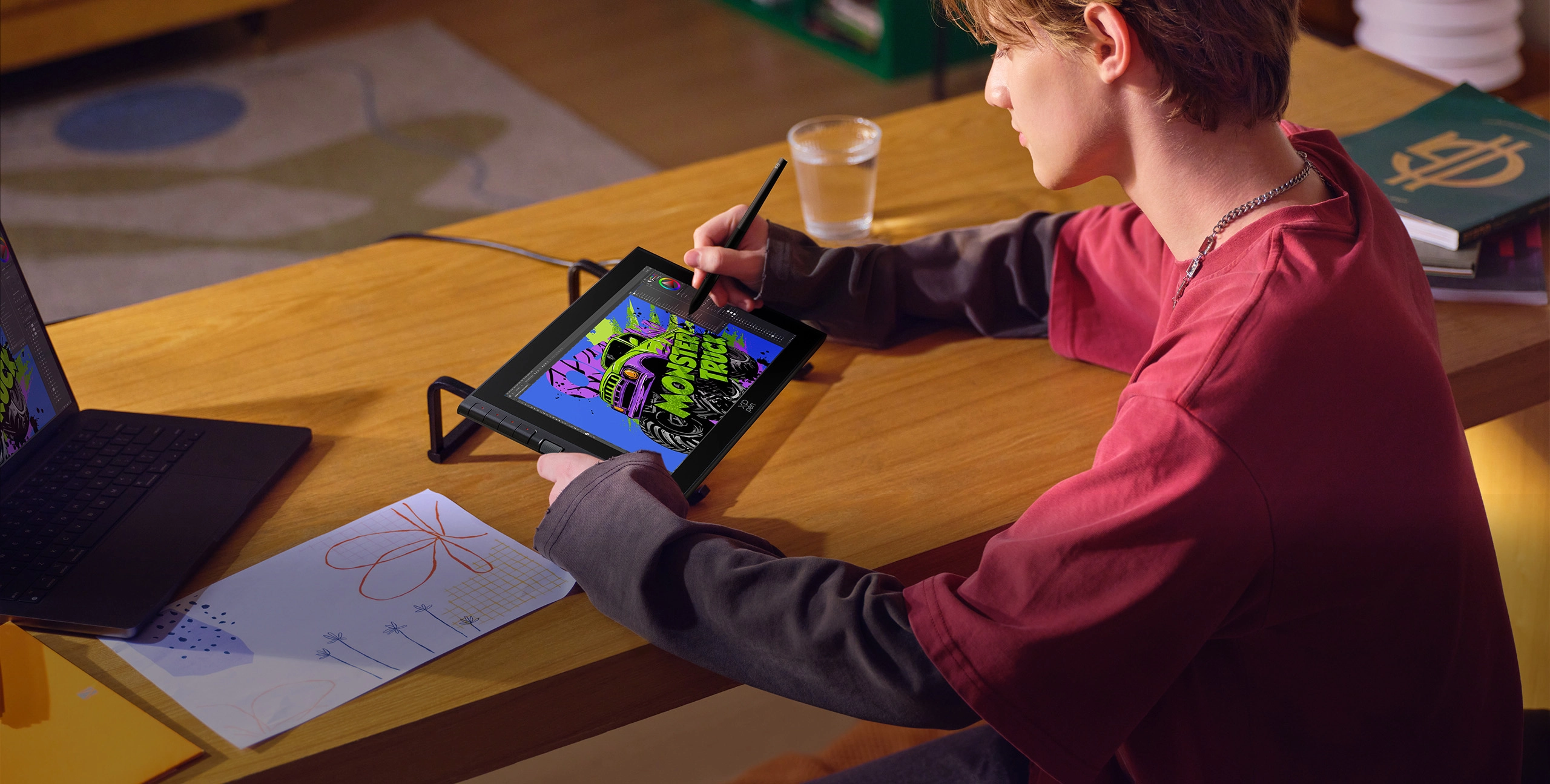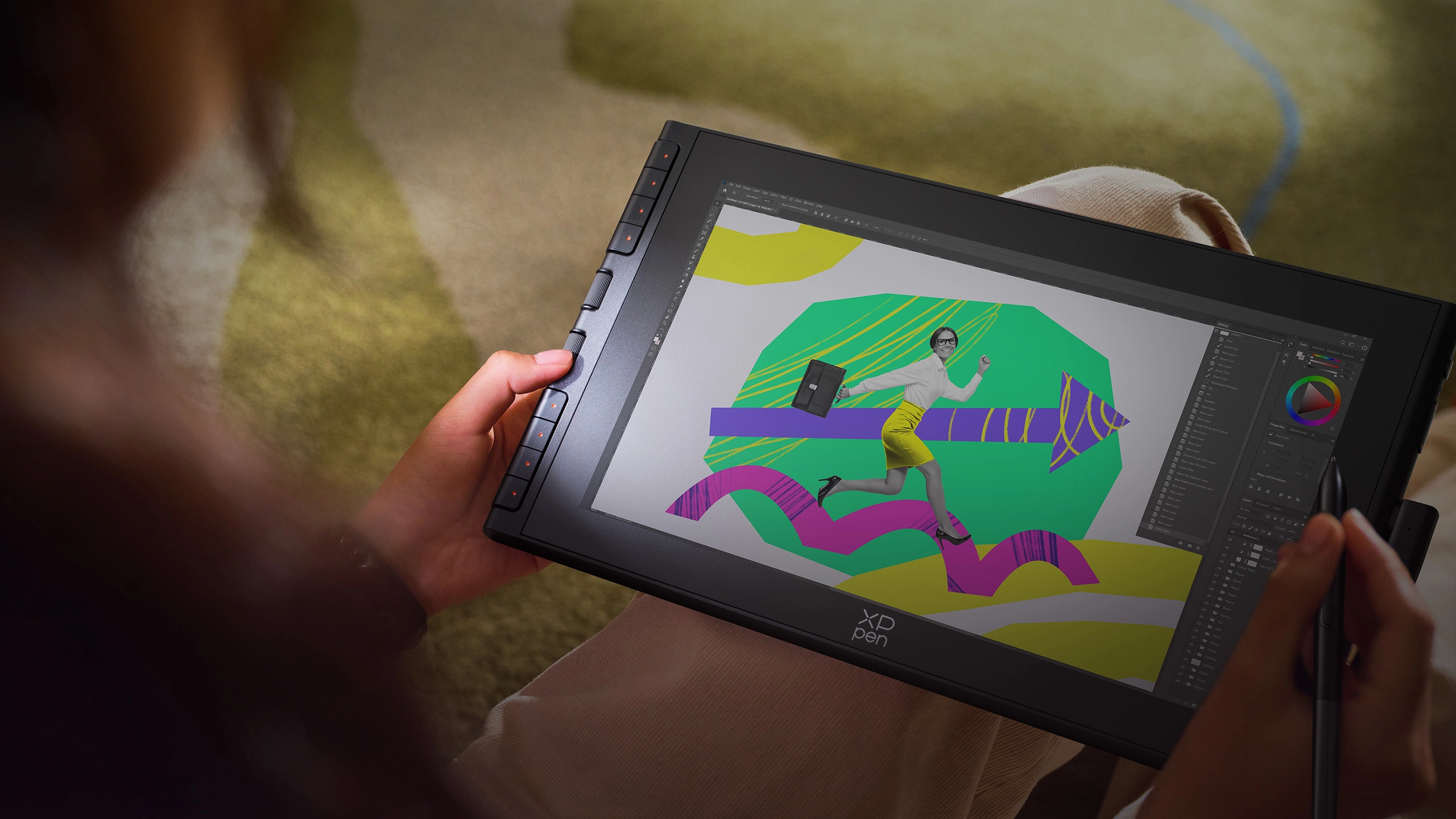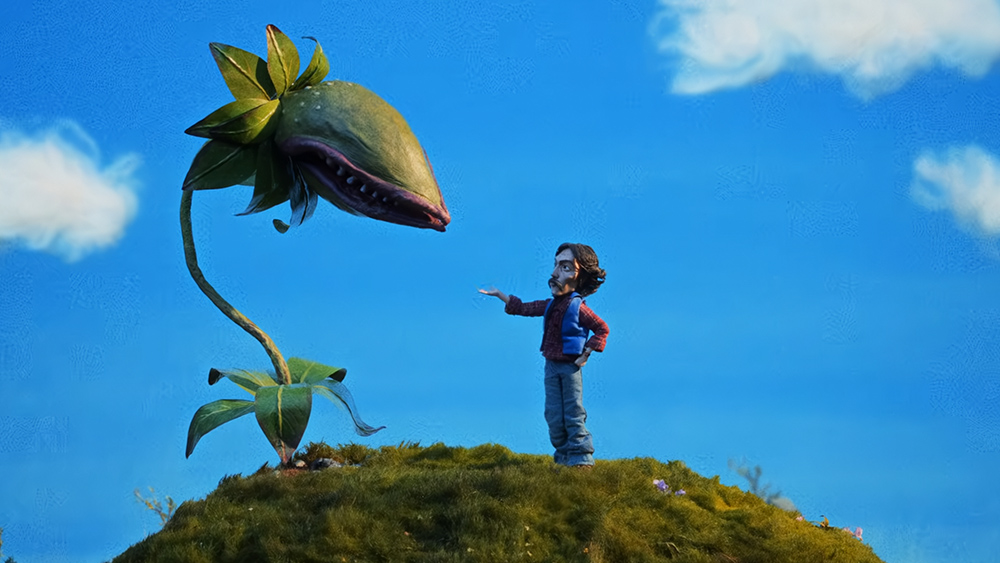Sponsor Content Created With XP-Pen
XPPen panel reveals the secrets and challenges of stunning character art
Clinton Jones and Karla Ortiz were among the artists on XPPen’s inspiring LightBox Expo 2025 panel.

XPPen is a big promoter of innovation in digital art, so its booth was a major highlight at LightBox Expo 2025. During the three-day gathering of movie, animation, game and illustration artists in Pasadena, the company showcased technological breakthroughs, including the new Artist 12 3rd and X4 Smart Chip Stylus and also hosted an expert panel discussion on the challenges of character design.
Focusing on the importance of storytelling in character development, the panel featured Clinton Jones (Pwnisher), the artist and director known for his popular 3D challenges, and Karla Ortiz, an internationally acclaimed film and TV artist who’s worked on the likes of Doctor Strange, Black Panther and Loki. They were joined by the fantasy artist Dustin Panzino (Inkwell) and the art director and animator David Liu.
Moderated by creativity consultant and speaker Rob Salkowitz, panelists answered questions from the audience and shared their approaches to creative assignments, discussing how they connect story and design. They also offered inspiring advice on breaking into the industry.
The foundations of character art

What quickly became clear is that certain foundations cross all genres and styles of art. Karla defined the three fundamentals of visual storytelling: body language, including facial expressions and hands, clothing and its status, which reveals more about a characters' identity, and finally light and location – “even subtle environmental elements like shadows or lighting can enhance the narrative, distinguishing between heroic or villainous qualities,” she noted.
In her personal work, she starts with silhouette and mood and then develops shapes to understand what the character should communicate. “Young artists often confuse technical skill in portraiture with effective character design,” she warned. “The focus should be on who the character is, their expression, and their environment – these elements tell the character's story more effectively than just creating a polished portrait.
Focus on intention and coherence over detail

Dustin agreed that while technical excellence is important, it’s even more important to convey the story and feeling effectively. “I prioritise creating a cohesive world where the characters, palette, and environment all feel like they naturally belong together,” he said.
Dustin also stressed the importance of intentionality. “Even if you're still developing skills in anatomy or other technical aspects, what matters most is whether something feels intentional rather than like a skill limitation” he said. “Not everything needs to make perfect sense in our world, but it needs to be coherent within the logic of the world you're creating”.
In his own work, he tends to start with backgrounds composed of shapes, focusing on composition and directing the viewer's eye. Then, he integrates characters into the setting, letting the environment inform their design. “It's a constant push and pull between environment and characters – they need to tell a story together”.
This means asking questions like, what's happening in this world? How should the characters dress for this setting?
How much detail is necessary? This can depend on preference. David said he follows what he calls “3D level detail”. “You don't need to render every element fully; instead, you establish certain detail levels that allow viewers to fill in the blanks themselves,” he said.
The challenge of adapting a character design

A common challenge that came up during the discussion was that of adapting an existing character. David has had to do this for video games, noting that although he was hired for his distinct style, he had to capture original design decisions and narrative intentions while translating it through his own artistic lens.
Karla had a similar experience with Doctor Strange, saying it was “terrifying but satisfying” to adapt such a beloved comic book character to film. “The key was identifying the character's essential elements while elevating them for film,” Karla explained. “We had to consider everything from the cape to the Eye of Agamotto”.
For the latter, she added layers of storytelling through details like moving rings and leather bindings that suggest repairs by monastery caretakers. “These subtle details hint at a deeper history without explicitly stating it - similar to how Lord of the Rings might reference thousand-year-old events to build world depth,” she said.
The artists' preferences vs client needs
Another challenge can be balancing personal preferences with clients’ needs. For Dustin, this sometimes means reining in his love of maximalism. He gave the example of his work with Disney on Larkana's costume designs, for which he had to consider what makes a design readable.
“The key question became: what's the simplest version that would still make me, as a maximalist artist, happy? This constraint actually improved my process – realising that designs can be effective without every little detail. It's about finding that sweet spot between maximalism and minimalism, asking yourself: Has it gone too far? Is it too simple?”
He says the silhouette is crucial for this balance. “Many artists make the mistake of diving straight into fine details while the fundamental silhouette is problematic,” he said. “Starting with strong silhouettes helps maintain that essential readability before adding complexity.”
New technology, classic references

Clinton drew parallels with environmental art, and noted that certain principles apply even when using the most cutting-edge tech, such as procedural content generation in software like Unreal Engine 5.
“It's about understanding how natural environments form – trees cluster in certain ways, surrounded by smaller bushes that transition into grass areas. We work with point distribution and noise maps to create these natural patterns”.
Referring to a recent trip to Pompeii, he noted that reference photos were crucial for identifying elements like flora. “What's important is studying how these environments actually work in nature, so when you add cameras and lighting, everything looks authentic. Having these real-world limitations actually helps the creative process – without boundaries, you can get lost in endless options.”
Enhancing artists' workflows with the XPPen Artist 12 3rd

Speaking of technology, XPPen’s Product Marketing Manager showed how the new XPPen Artist 12 3rd and X4 smart chip stylus can work for artists of all levels. This compact device packs trend-setting improvements for mobile creativity.
The latest-generation drawing display is another leap forward with an all-new X-Dial to streamline artists’ workflows. The X-Dial can adjust brush size, scroll through layers, or zoom, while eight responsive keys can be easily customised for shortcuts.
The star of the show is the new X4 Smart Chip Stylus with double the pressure levels of its predecessor (16,384), a lower activation force of 2g and a first-stroke response of just 30ms. The refined architecture makes the stylus capable of creating the smallest dots and strokes with no perceptible lag, while a sturdy new nib structure keeps lines steady and natural.

The display meets professional artists’ needs covering 99% sRGB, 97% Adobe RGB, and 97% DCI-P3 coverage, and XPPen’s AG nano-etched glass and AF coating reduce glare and add a subtle paper-like texture to make sketching feel natural. In another new quality of life addition, the tablet also introduces a magnetic stylus holder, allowing the stylus to snap securely into place.
The LightBox Expo 2025 showcased XPPen’s continued innovation in digital art technology and promotion of the creative community. Head to the XPPen website to learn more about the new tablet can enhance your creativity and to keep up to date on future events or product news.
The Artist 12 3rd is available from XPPen for just £189.99.
Daily design news, reviews, how-tos and more, as picked by the editors.
